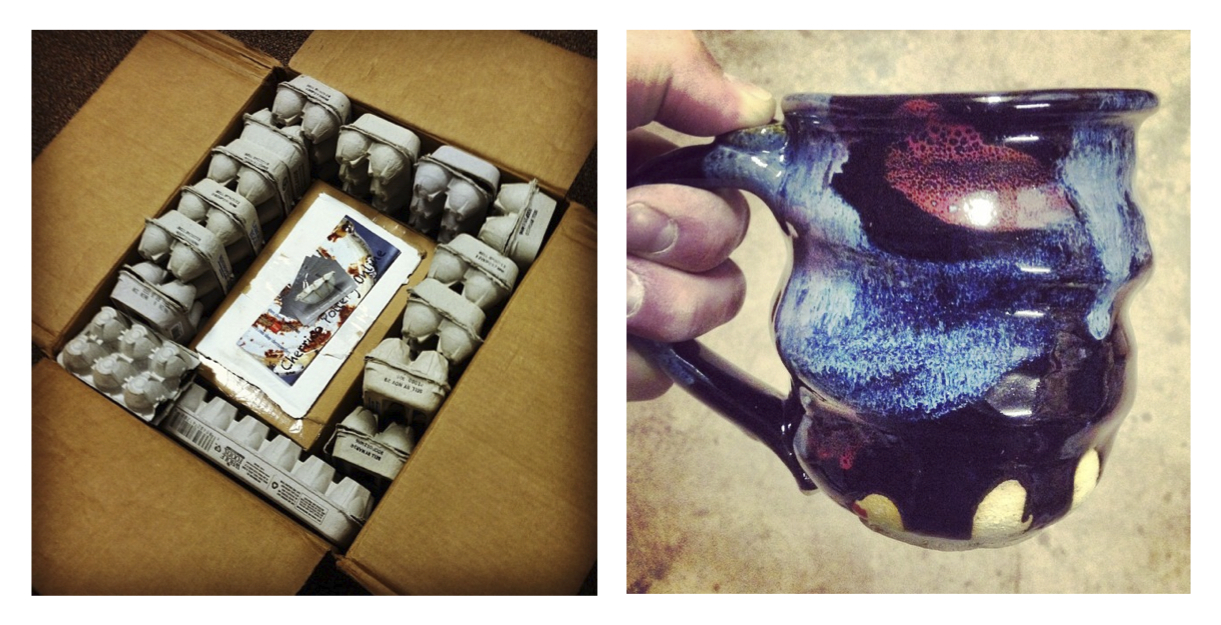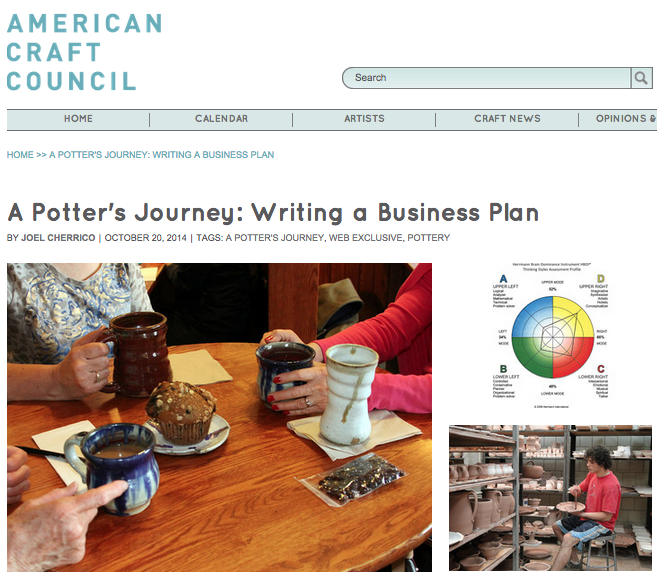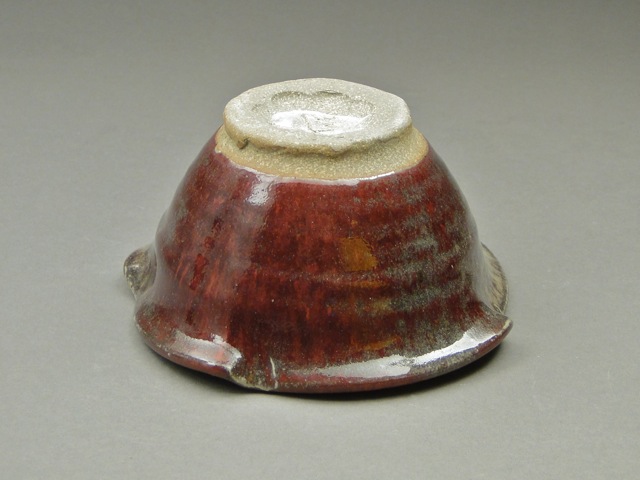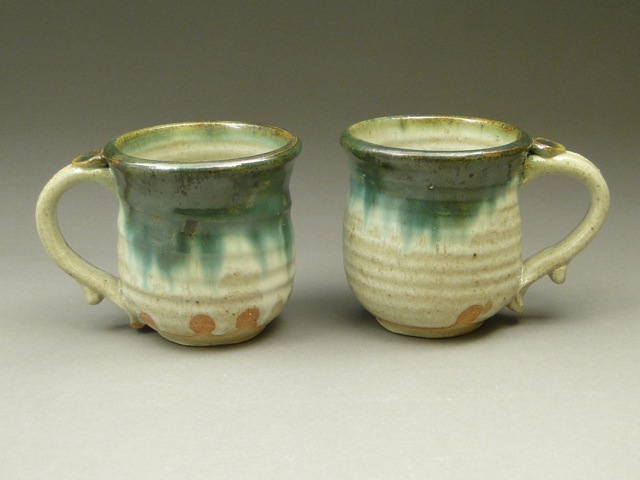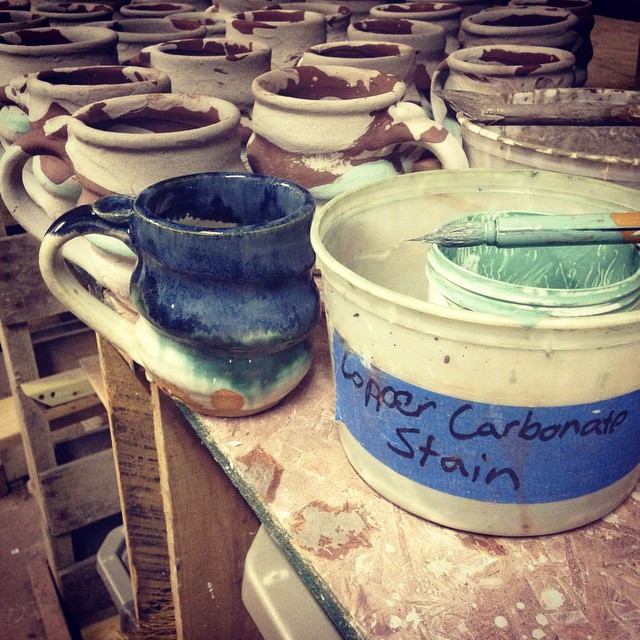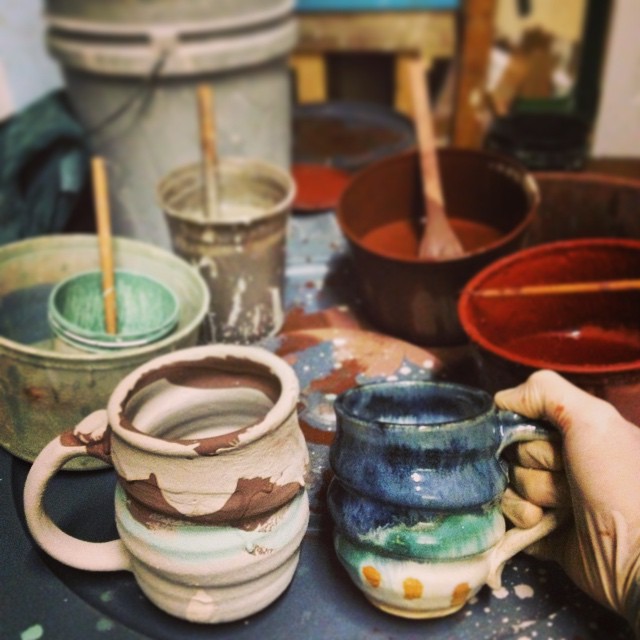This is the fourth post in Joel’s series entitled “A Potter’s Journey” for American Craft Council’s website. Joel enjoys this opportunity to write for American Craft Council about his unique journey as a potter and an entrepreneur. In this post, learn how a business plan assignment for a management class became a reality. Grab a cup of coffee (out of some pottery of course) and enjoy!
Cosmic Pots: The “Goldilocks Glaze”
Thirty-four years ago, astronomer and Cosmos host Carl Sagan made his famous claim:
“If you wish to make an apple pie from scratch, you must first invent the universe.” – Carl Sagan. “The Lives of the Stars.” Cosmos: A Personal Voyage. PBS. 1980.
Sagan could have been talking about making anything from scratch. His goal was to convey that everything on earth, everything in the universe, is made up of precise combinations of the most basic elements, and those elements were created in stars’ nuclear cores. We could also say, “If you wish to make a pot from scratch, you must first invent the universe.”
These star-forged elements combine to form all the components of ceramics: the different strains of clay (silicon and iron), the water used in throwing (oxygen and hydrogen), the arboreal ingredients of glazes (calcium), and even the potter himself (carbon). Entire books could be written focusing solely on one of these ceramic elements.
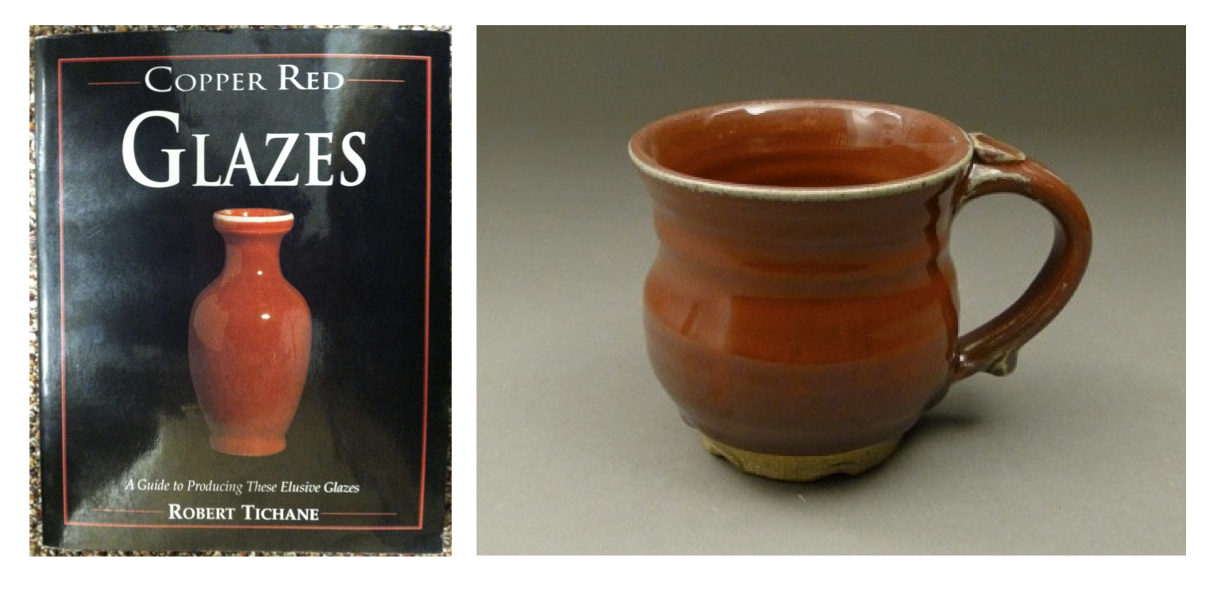 Copper, for example. Copper red glazes have been meticulously pursued and produced since the fifteenth century in China. The new host of Cosmos, Neil deGrasse Tyson, often analyzes the concept of a “Goldilocks planet” – a planet which has the precise conditions for possibly sustaining life. A successful copper red glaze is a “Goldilocks glaze.” Everything in both the recipe and the firing must be perfect.
Copper, for example. Copper red glazes have been meticulously pursued and produced since the fifteenth century in China. The new host of Cosmos, Neil deGrasse Tyson, often analyzes the concept of a “Goldilocks planet” – a planet which has the precise conditions for possibly sustaining life. A successful copper red glaze is a “Goldilocks glaze.” Everything in both the recipe and the firing must be perfect.
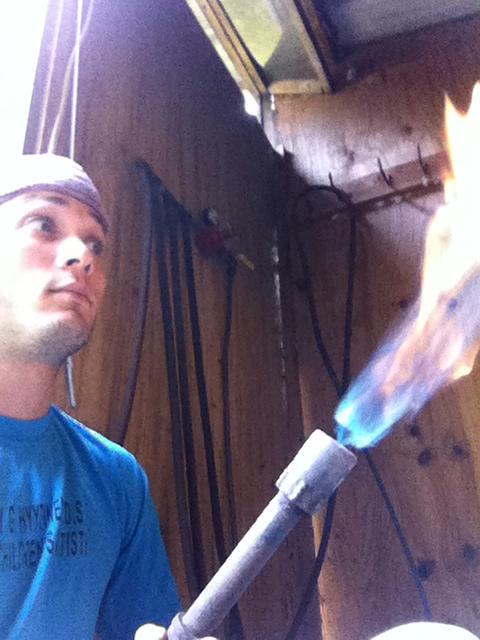
As Sagan and Tyson have taught us, science is found in everything we do. Baking an apple pie from scratch, developing a new drug, and mixing and firing glazes all rely on experimentation, creativity, and chemical reactions. A potter doesn’t need a degree in chemistry, but he uses some pretty cool science to produce copper red glazes.
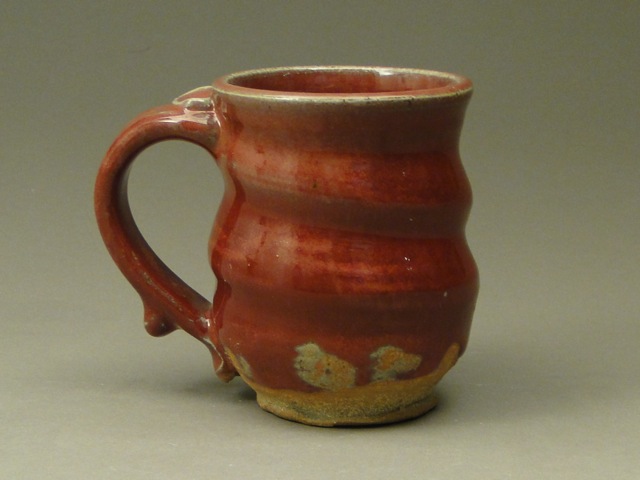 Nowadays, gas-fired kilns produce the best conditions for copper red glazes, but ancient Chinese potters created their beautiful pieces using only wood-fired kilns. Many potters do not have regular access to gas- or wood-fired kilns, and use electric ones instead. Electric kilns eliminate the need for constant temperature monitoring, but they are unable to create the atmosphere copper red glazes require.
Nowadays, gas-fired kilns produce the best conditions for copper red glazes, but ancient Chinese potters created their beautiful pieces using only wood-fired kilns. Many potters do not have regular access to gas- or wood-fired kilns, and use electric ones instead. Electric kilns eliminate the need for constant temperature monitoring, but they are unable to create the atmosphere copper red glazes require.
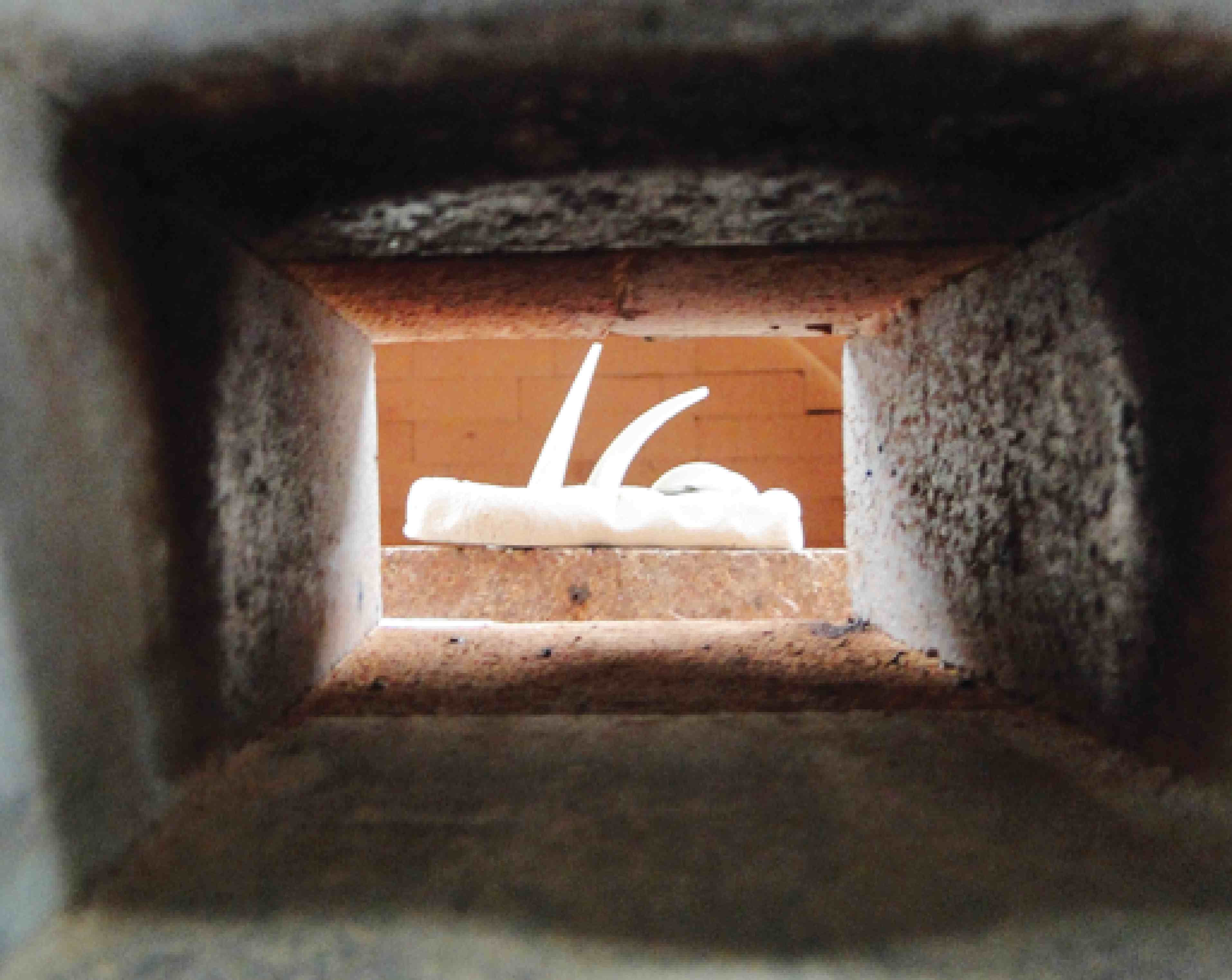
Copper red glazes need to be fired to a temperature called “cone 10.” This photo shows three cones (small pieces of clay), set up inside a gas-fired kiln. Each of these pieces is made from a different factory-produced type of clay formulated to melt at a certain temperature. A device called a pyrometer can be used to measure the temperature of the air inside the kiln, but what really matters is the temperature of the clay, hence the use of cones. When cone 10 melts, the potter knows the clay is roughly 2345 °F.
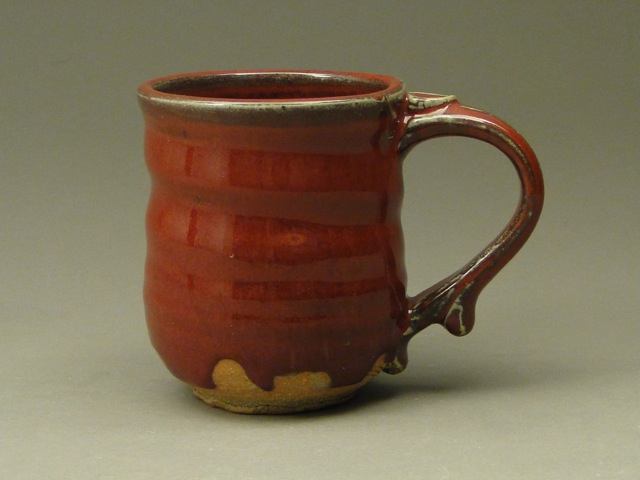 Even inside the same kiln, the atmosphere unavoidably varies. The pots below all had the same glaze and firing, but were placed in different areas of the kiln.
Even inside the same kiln, the atmosphere unavoidably varies. The pots below all had the same glaze and firing, but were placed in different areas of the kiln.
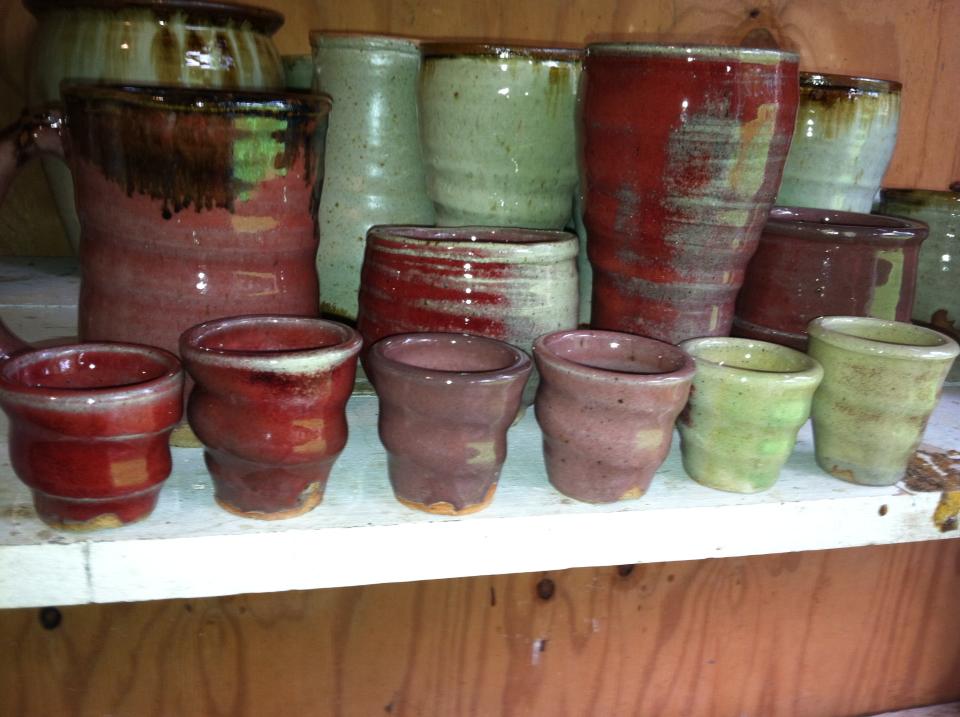 The green color on the right also occurs when firing a copper glaze in an electric kiln.
The green color on the right also occurs when firing a copper glaze in an electric kiln.
Color, just like copper, depends on the stars. Light from our sun strikes objects on earth, and those objects absorb some wavelengths of light and reflect others. The wavelengths they reflect are the colors we see. As Tyson puts it:
“Color is the way our eyes perceive how energetic light waves are.” – Neil Degrasse Tyson. “Hiding in the Light.” Cosmos: A Spacetime Odyssey. Fox. 2014.
Thankfully, potters did not have to create the universe to make pots from scratch. Their ingredients are already present in the cosmos, swirling in the air and lurking in the earth, waiting for them.

Local Blend, National Trend: Millstream Arts Festival 2014
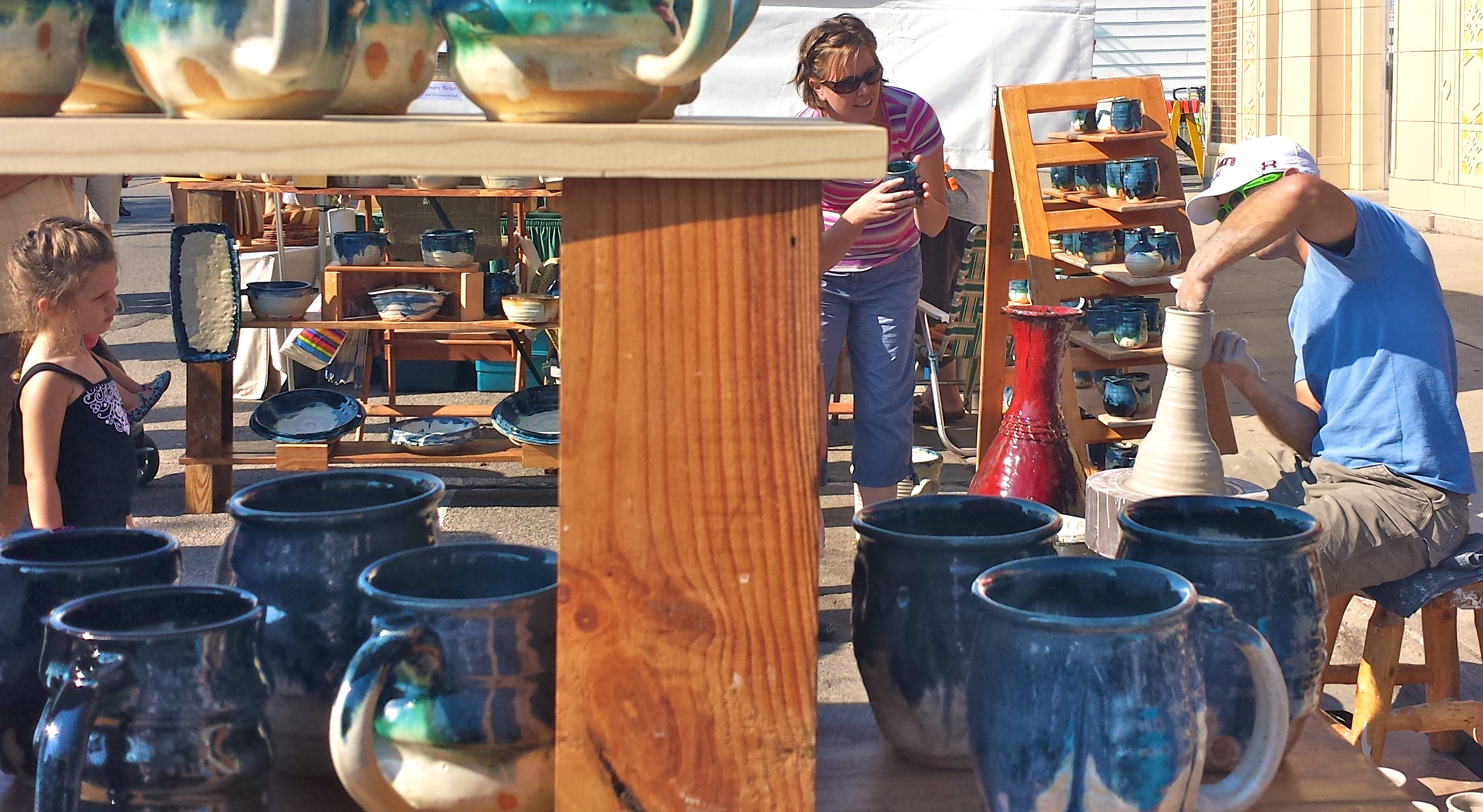
With the winter-threatening winds howling outside, can you believe this sunny photo was taken less than two weeks ago? On Sunday, September 29th, the weather was a summery 80 degrees for the Millstream Arts Festival. Sixty-four artists sweated it out on the streets of St. Joseph, bringing in sales not only for themselves, but also for local businesses.
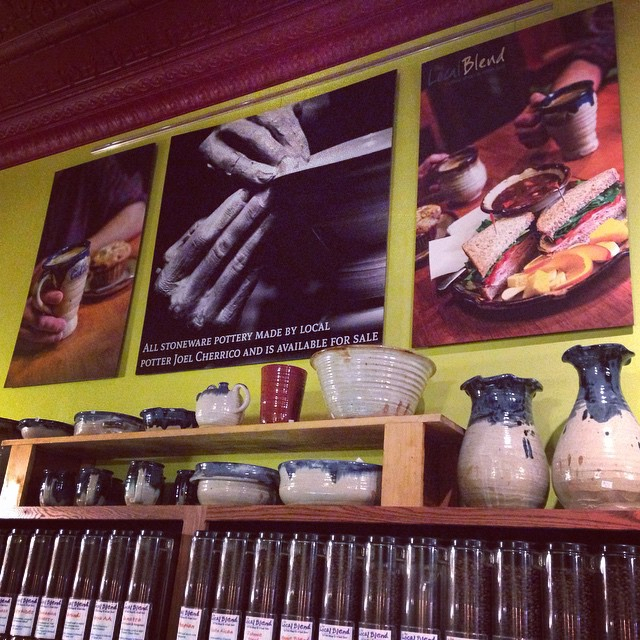
Joel’s unique symbiotic partnership with the Local Blend continues to cultivate this relationship between artist and business year-round. This was Joel’s fourth year participating in Millstream and his second year throwing pots in front of the Local Blend. This location and his kick-powered wheel have consistently shown to bring in more sales. If you weren’t looking closely as you strolled down Minnesota Street, you may have missed him because of the crowd that gathered to watch pots being made!
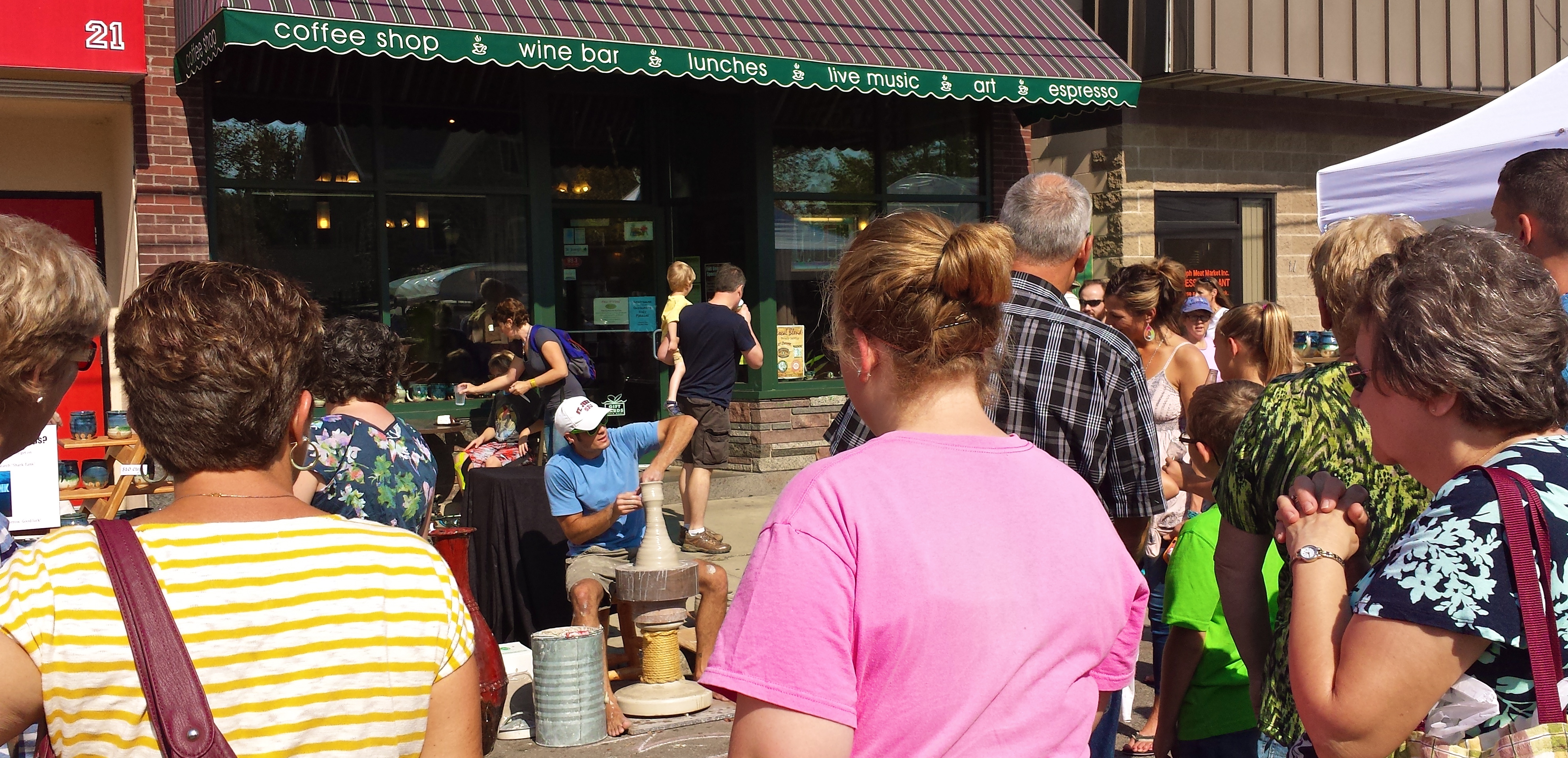
Many of you may have heard about (and maybe entered!) Joel’s recent Shark Tank Pottery Giveaway. We selected the winners the day after Millstream, and gave those who stopped by the booth one last reminder to enter.
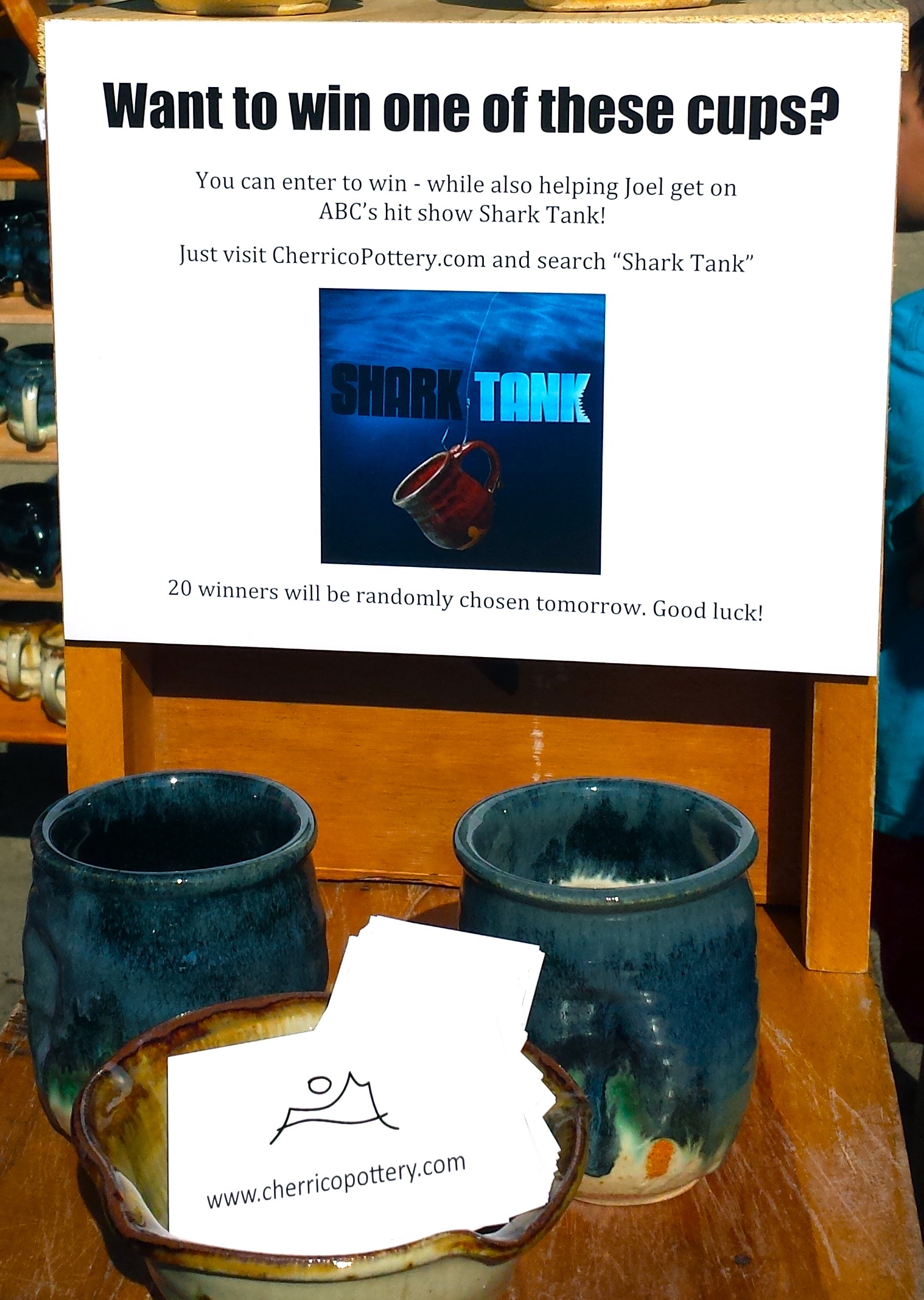
As fun as this contest was, as much as Joel wants to bring his wheel to national TV – the local community remains paramount to his business model and poignant to him as an artist. This is where his pottery began. The local community is where Joel earns his livelihood, giving him the stability to pursue his bigger dreams and schemes.
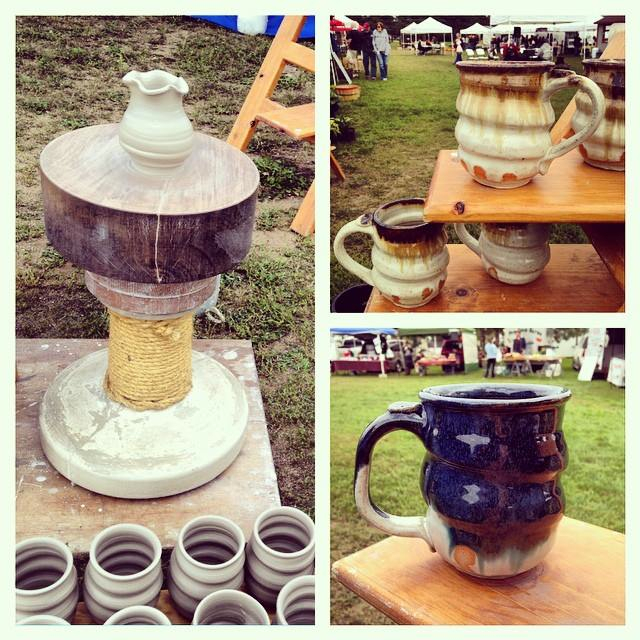
Joel participates in 3 weekly farmers’ markets in Sartell, St. Cloud, and St. Joseph, Minnesota. These farmers’ markets, along with art festivals such as Millstream and Art in Bayfront Park in Duluth, Minnesota, cultivate the local emphasis essential to Joel’s artistic philosophy. Here, customers can handle the pottery, watch it being made, and get to know the artist.
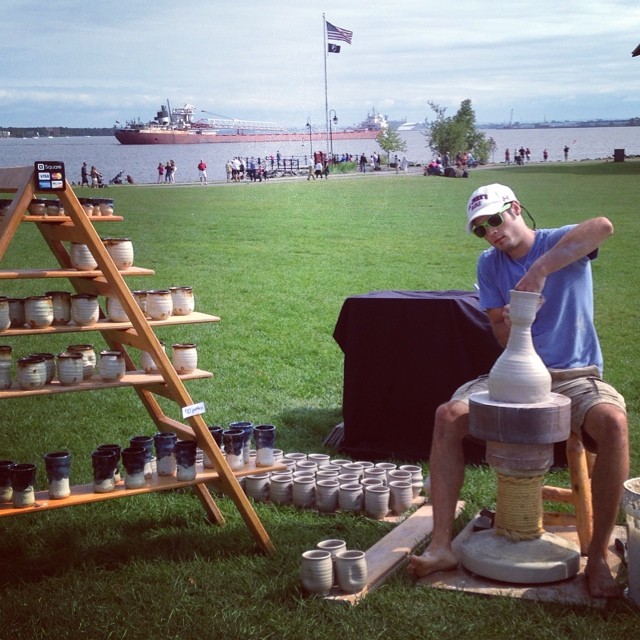
Then, when someone takes home a mug, its mysteries become more accessible and appreciated. That spiral in the clay, those finger marks in the glaze, they now have memory and meaning in them.
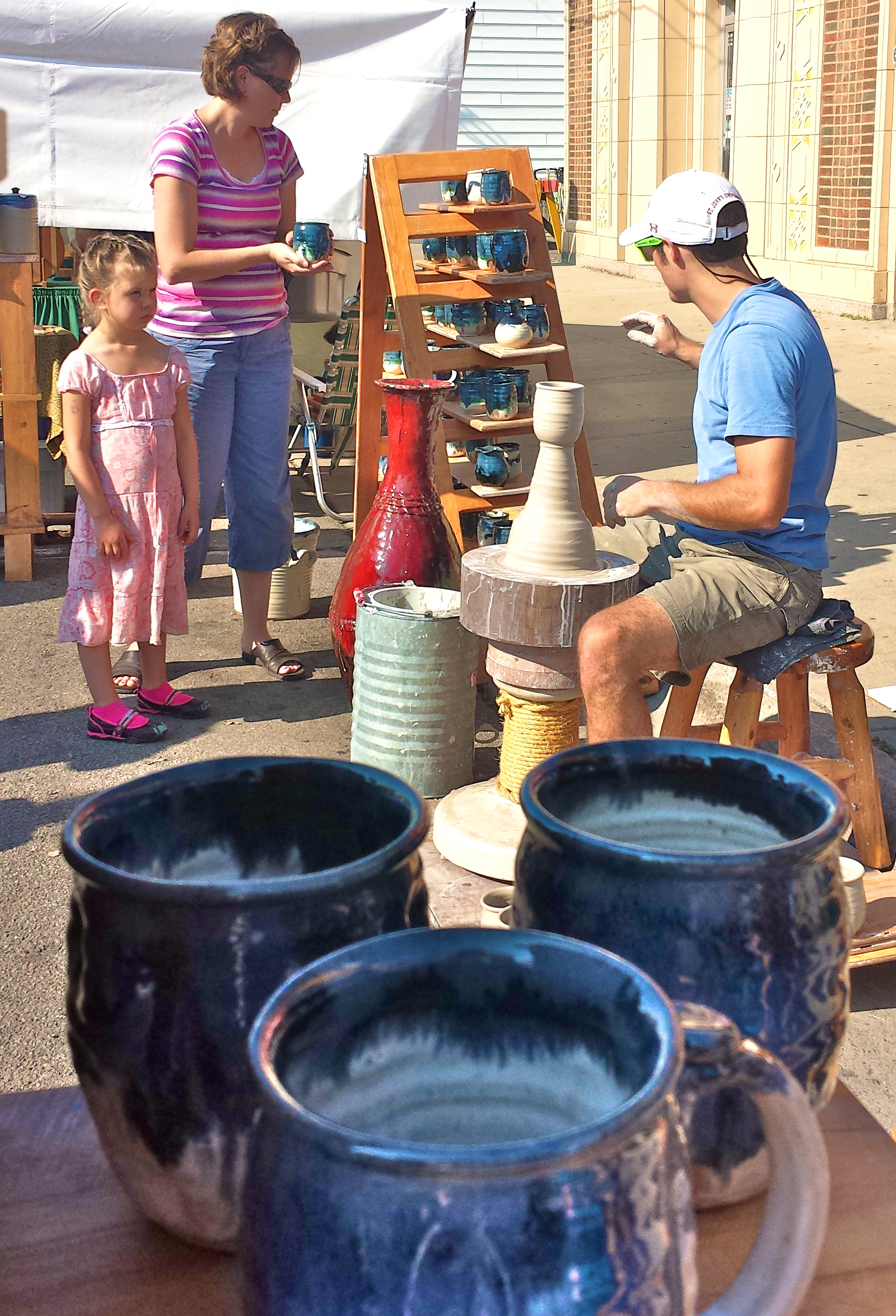
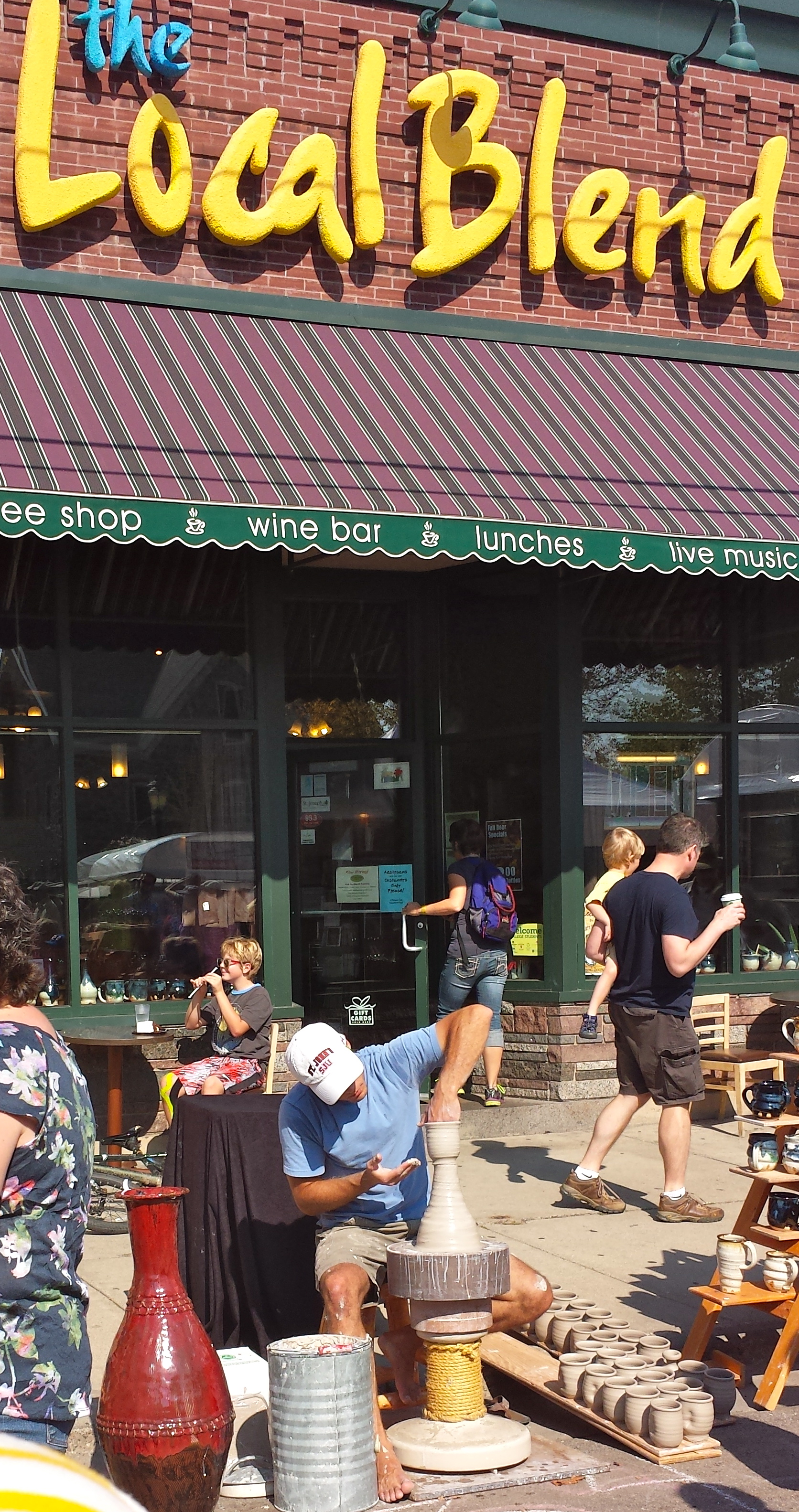
Shipping and Mishandling: From the Digital Store to Your Doorstep
Anyone who’s flown with a commercial airline before knows the dread that accompanies handing off your luggage to the disgruntled employee who chucks your bag onto the conveyer belt without blinking. A similar leap of faith occurs with online shopping, when you enter your credit card number and simply trust that the product will arrive safely and soon.
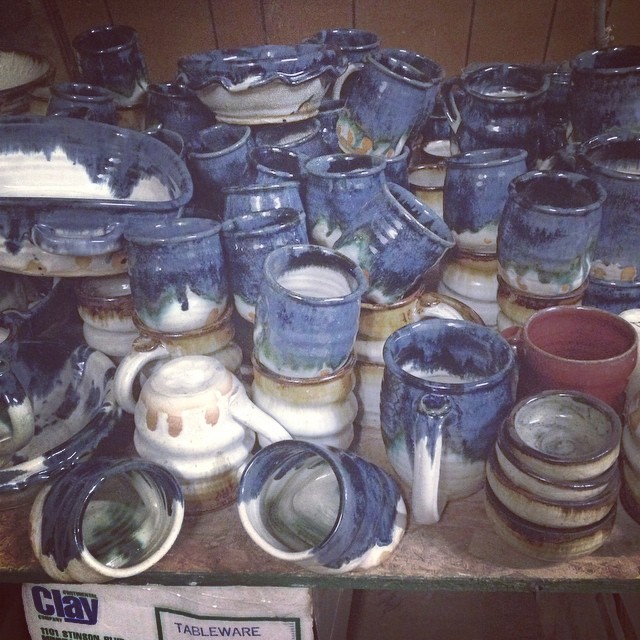
Joel’s pottery is pretty tough. His mugs survive being washed and handled tens of times a day at the Local Blend. I won’t disclose how often my own Cherrico pottery cups get yanked out of the cupboard to be filled with wine and clanked down onto a coaster. Joel himself has no qualms piling up pots for one of his signature #potsonpots moments.
But that airport bag woman, that USPS postman, they just don’t care. One of my intern duties is prepping the pots sold online for their journey through this uncaring world. The last thing Joel wants is for a customer – be it a mother in Iowa or a celebrity like Ellen Degeneres – to open that package and find a broken pot. Not only does this make for poor customer service, but it also wastes time and money because a new pot must now be packed and shipped free of charge.
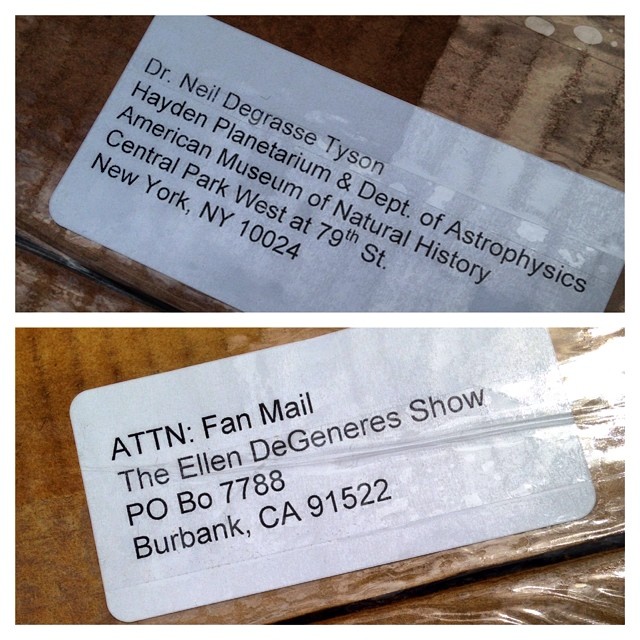
Another way Joel saves money in the shipping process is by following his blunt philosophy of: “I hate buying things.” Thankfully the unavoidable exceptions to this rule (tape, labels, a box cutter, etc.) are relatively cheap. Other materials he can find completely free.
The first step of shipping a pot is wrapping it in newspaper. We use regular old newspapers (free!) or a large roll of blank newsprint Joel got from a friend who works for a local paper (also free!). The last step of shipping a pot is putting it in the box. As many frequently-moving college students know, liquor boxes are a must-have. They’re plentiful, a convenient size, sturdy, and – say it with me now – free. The downside to using liquor boxes is they must be turned inside out because it is illegal for regular folks like us to ship in liquor boxes.
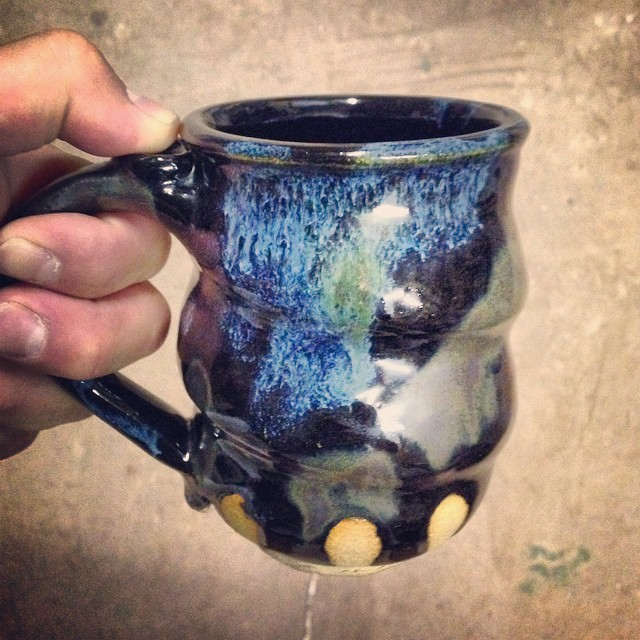
What about the middle step? Besides frugality, Joel also pursues sustainability in the packing process – in the form of hundreds of egg cartons.
A few years ago, Joel connected with a local farmer named Everett. Everett had a deal with the recycling center to take the egg cartons they received. (Brief PSA: Even though many of them are made from post-consumer materials, egg cartons are not recyclable. Huh. Who knew?) As a chicken farmer, Everett used some of the cartons himself, but the rest he kept in his garage in massive stacks, knowing someone would have a use for them one day.

Joel was that someone. Egg cartons are made to transport a product much more fragile than his pottery. They provide great cushioning and quickly fill up the box’s empty space without adding very much weight, which is paramount when paying for postage. Plus, two van loads of egg cartons cost Joel only one box of pots for Everett.
Mutual sustainable practices such as this are not new to our community. When Richard Bresnahan was founding the St. John’s Pottery, he was drawn to the economical habits of the monastery, especially the carpenters:
“He discovered they rarely threw anything away and carefully salvaged doors, windows, paneling, fixtures, and other hardware when structures were razed or remodeled. In the hands of Benedictine carpenters, such discards were given new life.” – Matthew Welch. Body of Clay, Soul of Fire. St. John’s University Press, 2001. Page 52.
Let’s say you decide to purchase a pot from Joel’s online store. (Maybe you entered his Shark Tank Pottery Cup Giveaway, and you wanted to give your anticipated prize cup a companion.)
I receive your order confirmation and find the corresponding pot. Inside a box which once protected bottles of Jameson, I build a nest of Everett’s egg cartons. The newspaper-wrapped pot gets snugly squeezed in and is topped off by more cartons.
Finally, I close the lid, without taping it for now, and shake that box like I’m a USPS delivery woman chucking it onto your doorstep because it’s the middle of January and it’s 40 below and I want to get back into my truck ASAP. If I don’t feel anything moving in there, I’ve done my job right. All the package needs now is tape, labels, and a lift to the post office.
A few days later, you’ll get to open that box and see your trust in online shopping fulfilled.
